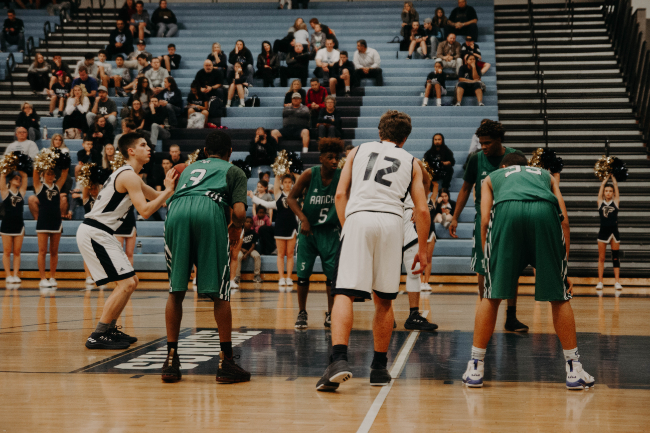
High Schools Need Additional Security for Basketball Games
- By Patrick V. Fiel
- December 08, 2023
Now that football season has ended, it is time to move indoors and watch your favorite basketball teams compete.
The presence of a large number of enthusiastic fans alone can create a variety of security challenges, but factor in drugs, alcohol, weapons, and gangs at the gymnasiums, and you could be looking at a recipe for disaster.
This past football season has been incredibly challenging for school districts; there have been over twenty school shootings at local football games around the country.
Unfortunately, each year high schools across the country report incidents of vandalism, theft, fighting, shootings and even deaths at what are intended to be spirited, yet safe school events.
In the past few years, it has become so bad that school administrators have moved games to daytime hours and/or neutral sites, played them without spectators or simply canceled them altogether.
While these actions are intended to protect the players and students, they deprive an entire community of enjoying sports traditions and new rivalries being played with a sense of good sportsmanship.
Rather than take such extreme actions, it would be better for administrators to create security plans, incorporate security solutions, and hire additional law enforcement that make it more difficult for a few troublemakers to ruin the enjoyment for the vast majority.
Effective security measures can be achieved by using a combination of policies, procedures, technology, and personnel.
The process begins with a thorough all-hazards assessment, conducted by a security consultant, which should include the entire inside and outside of the gymnasiums, especially focusing on the exterior and parking lots. The assessment will identify potential threats and vulnerabilities, considering factors such as crowd size, venue layout, location, and past security incidents.
Have a contingency plan before, during and after the game for any and all types of emergencies, such as medical emergencies, evacuations, or threats.
The day of the game, school administrators should lock all school doors except those required for direct access to the gymnasium. No one should have access to the entire school. Signage will help keep visitors moving in the right direction to the gymnasium entrance.
School landscapers need to trim trees and foliage around the gymnasium to reduce potential hiding places for weapons, contraband, and people. Bright lighting on dark winter afternoons or at night can function as a deterrent to criminals and assist security staff and law enforcement in monitoring situations. Also, schools need to be sure to light all areas of the parking lots, walkways, and streets.
Security personnel and law enforcement should maintain vigilance inside the gymnasium and outside and patrol the entire gymnasium area before, during, and immediately after the game.
Be sure to work closely with local law enforcement and request that extra officers be made available at the event and for patrolling the parking lots and areas surrounding the gymnasium. Many of the shootings at recent football games occurred when the game had finished, and everyone was leaving.
Security personnel and law enforcement should watch for loitering individuals and suspicious vehicles. Additionally, gathering and socializing in the parking lot or sitting in cars before or after the game should be prohibited.
Schools should train staff to recognize the signs of spectators under the influence of drugs or alcohol and have those spectators removed from the game.
Events should have a policy that requires attendees to remain in the gymnasium unless they are entering or exiting. It is also important to enforce a no re-entry policy.
In addition, schools need to incorporate the necessary measurements to prevent and mitigate security incidents on their campus.
Metal Detectors: Both handheld wands and walkthrough devices should be used to check all spectators as they enter the gymnasium. However, personnel need to be professionally trained in their use for the devices to work properly and without undue delays. Have a list of items that are prohibited in the gymnasium, i.e., all weapons, drugs, alcohol, backpacks or large bags and any other objects that may compromise public safety.
Security Cameras: Both indoor and outdoor security cameras should be available. During the game, make sure security personnel or law enforcement officials are monitoring live video. If they see an area of concern, they can immediately respond and resolve the issue before it becomes a serious incident. If a crime is committed, the recorded video can help identify suspects and prosecute offenders.
The key to having a safe basketball game is prior planning with a comprehensive plan in place with additional law enforcement inside and outside.
About the Author
Patrick V. Fiel, Sr. is a national security consultant. He has over 35 years of experience managing law enforcement and security organization. He has served as the Public Safety Advisor for a large security integrator, Executive Director of Security for the Washington, D.C. Public School System, and is retired from the U.S. Army Military Police Corps. He can be reached at (910) 789-4265 or at [email protected].